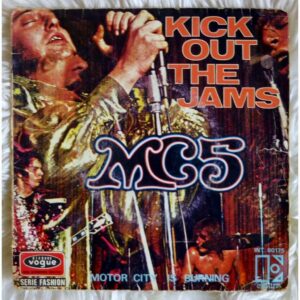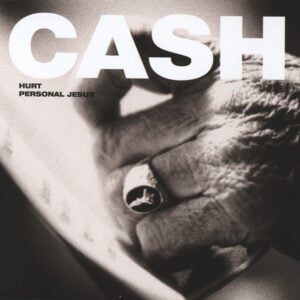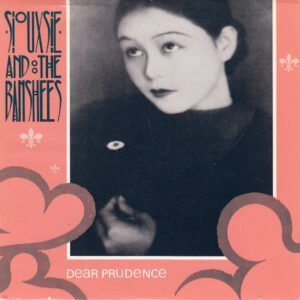Big L- No Endz No Skinz
Description
Lamont Coleman (May 30, 1974 – February 15, 1999), known professionally as Big L, was an American rapper. Emerging from Harlem in New York City in 1992, Big L became known among underground hip-hop fans for his freestyling ability. He was eventually signed to Columbia Records, where, in 1995, he released his debut album, Lifestylez ov da Poor & Dangerous. On February 15, 1999, he was fatally shot nine times in a drive-by shooting in Harlem.
Big L was noted for his use of wordplay, and writers at AllMusic, HipHopDX and The Source have praised him for his lyrical ability. Henry Adaso described him as “one of the most talented poets in hip-hop history.”
In an interview with Funkmaster Flex, Nas claimed Big L “scared me to death. When I heard [his performance at the Apollo Theater] on tape, I was scared to death. I said, ‘Yo, it’s no way I can compete if this is what I gotta compete with.'”
Early life
Coleman was born on May 30, 1974, in the Harlem neighborhood of New York City. He was the third and youngest child of Gilda Terry (d. 2008) and Charles Davis. Davis left the family while Coleman was a child. He had two older half siblings: Donald and Leroy Phinazee (d. 2002). Coleman received the nicknames “Little L” and “Mont-Mont” as a child. His elder brother, Donald Phinazee, took Coleman to a Run-DMC concert at the Beacon Theatre when Coleman was about 7 years old. According to Phinazee, Coleman was awed by the performance which sparked his interest in rapping. By age 12, Coleman became a big hip hop fan and started freestyling with other people in his neighborhood.
Coleman began writing rhymes in 1990. He also founded a group known as Three the Hard Way in 1990, but it was quickly broken up due to a lack of enthusiasm among the members which consisted of Coleman, Doc Reem, and Rodney. No projects were released, and after Rodney left, the group was renamed Two Hard Motherfuckers. Around this time, people started to refer to Coleman as “Big L”. In the summer of 1990, Coleman met Lord Finesse at an autograph session in a record shop on 125th Street. After he did a freestyle, Finesse and Coleman exchanged numbers.
Coleman attended Julia Richman High School and graduated in 1992. While in high school, Coleman freestyle battled regularly; in his last interview, he stated, “in the beginning, all I ever saw me doing was battling everybody on the street corners, rhyming in the hallways, beating on the wall, rhyming to my friends. Every now and then, a house party, grab the mic, a block party, grab the mic.”
Career
1992–1995: First recordings and record deal
In 1992, Coleman recorded various demos, some of which were featured on his debut album Lifestylez ov da Poor & Dangerous. On February 11, Coleman appeared on Yo! MTV Raps with Lord Finesse to help promote Finesse’s studio album Return of the Funky Man. Coleman’s first professional appearance came on “Yes You May (Remix)”, the B-side of “Party Over Here” (1992) by Lord Finesse, and his first album appearance was on “Represent” off of Showbiz & A.G.‘s Runaway Slave (1992).
During this time, he won an amateur freestyle battle hosted by Nubian Productions which consisted of about 2,000 contestants. In 1993, Coleman signed to Columbia Records. He then joined Lord Finesse’s Bronx-based hip hop collective Diggin’ in the Crates Crew (DITC) which consisted of Lord Finesse, Diamond D, O.C., Fat Joe, Buckwild, Showbiz and A.G. In 1993, Coleman released his first promotional single, “Devil’s Son”, and later said it was one of the first horrorcore singles, influencing others. He said he wrote the song because “I’ve always been a fan of horror flicks. Plus the things I see in Harlem are very scary. So I just put it all together in a rhyme.” However, he said he preferred other styles over horrorcore.
Coleman founded the Harlem rap group Children of the Corn (COC) with Killa Cam (Cam’ron), Murda Mase (Ma$e), Bloodshed and McGruff in 1993. On February 18, 1993, he performed live at the Uptown Lord Finesse Birthday Bash at the 2,000 Club, which included other performances from Fat Joe, Nas, and Diamond D. In 1994, he released his second promotional single “I Shoulda Used a Rubba”. On July 11, 1994, Coleman released the radio edit of “Put It On“, followed up by the release of the music video three months later. In 1995, the music video for the single “No Endz, No Skinz” debuted. It was directed by Brian Luvar.
His debut studio album, Lifestylez ov da Poor & Dangerous, was released in March 1995. The album debuted at number 149 on the Billboard 200 and number 22 on Top R&B/Hip-Hop Albums. Lifestylez would go on to sell over 200,000 copies as of 2000. Three singles were released from the album; the first two, “Put It On” and “M.V.P.“, reached the top 25 of Billboard‘s Hot Rap Tracks and the third “No Endz, No Skinz” did not chart.







